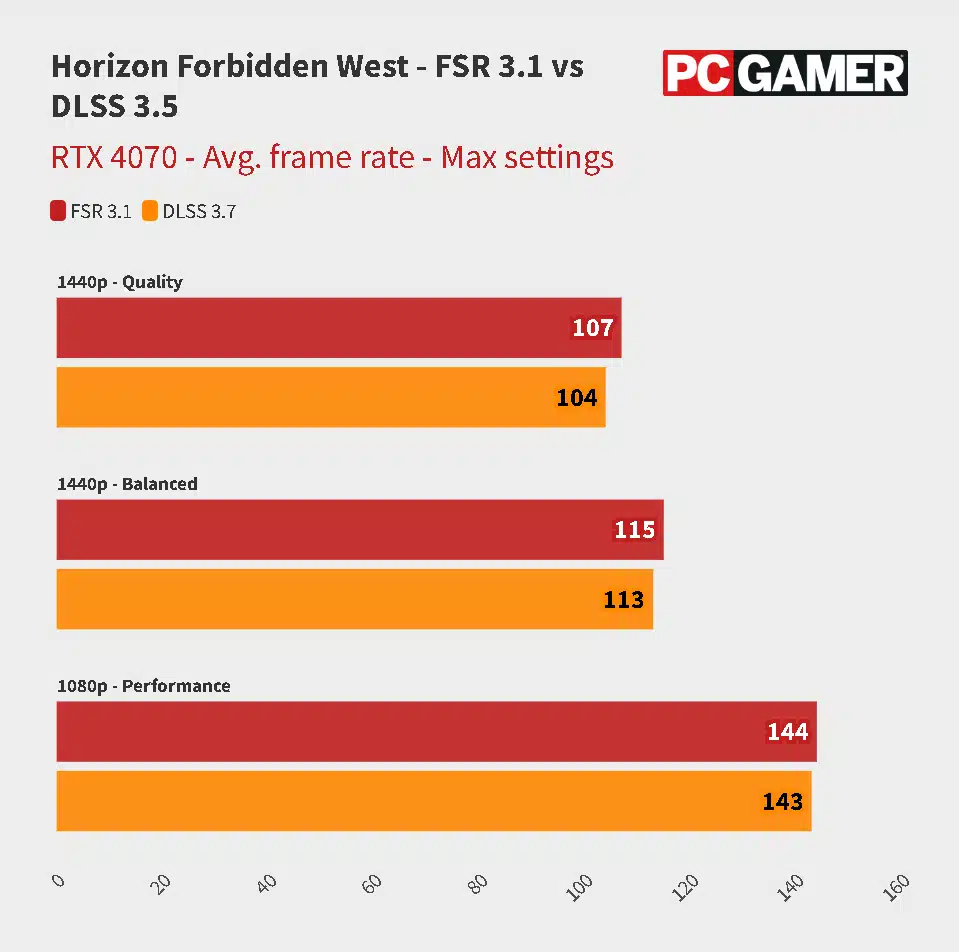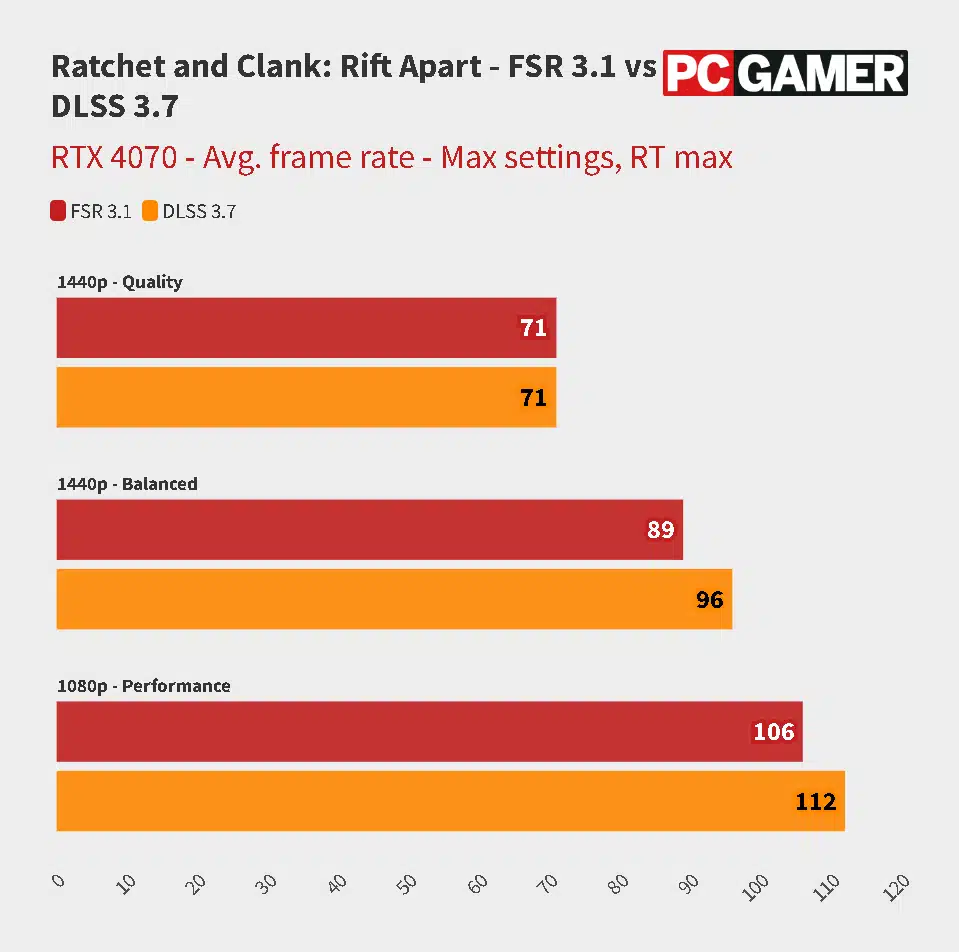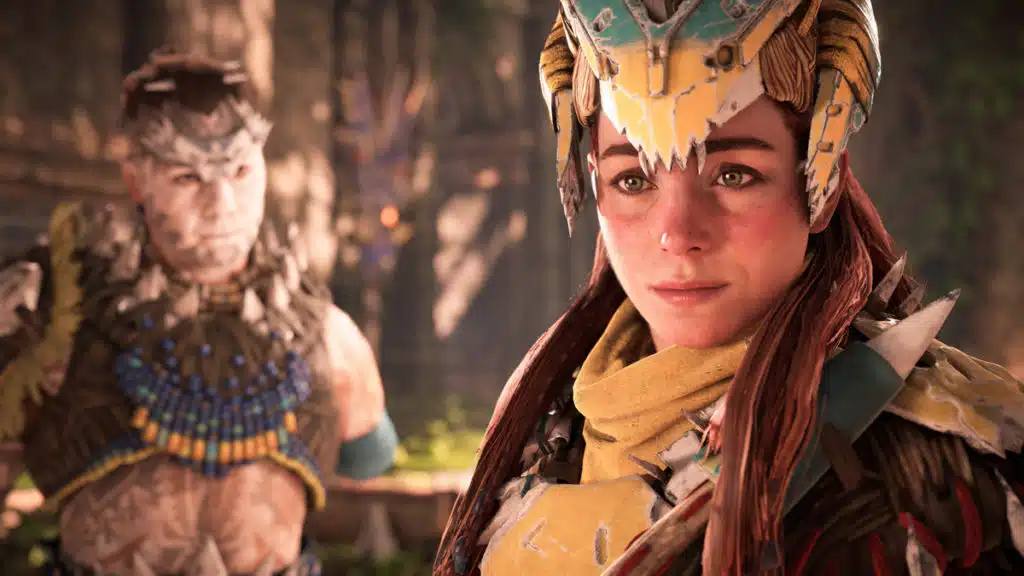AMD FidelityFX Super Resolution 3.1, a new iteration of the advanced open-source upscaling technology that red team launched for PC gamers in June, isn’t better than NVIDIA DLSS 3.5 in the image quality department despite all of the improvements and new features that it has introduced, including the reduction of ghosting and enhanced frame generation, according to new tests for Horizon Forbidden West and Ratchet & Clank: Rift Apart that have surfaced online. That said, FSR 3.1, which is compatible with a wider range of hardware, may provide better performance than DLSS 3.5 in some cases, per a benchmark that’s been shared.
From a report:
- “…there’s noticeable distortion and graining around [Aloy’s] frame under movement, an effect that’s much less pronounced with DLSS enabled.”
- “Nvidia’s solution seems to be better at accurately smoothing crunchy edges with detailed scenes behind them, and switching back and forth between the two reveals a smoother, more pleasant-looking image in the DLSS version.”
- “…while FSR 3.1 undoubtedly handles motion better than its predecessors, and delivers decent image quality at 1440p quality settings, compared to DLSS it’s still the worse of the two.”
- “…DLSS stands victorious. AMD might be improving, but even after putting up a brave fight with this latest FSR iteration, Nvidia remains the upscaling champ.”
- “When it comes to performance itself, FSR 3.1 actually puts on a decent showing…on average, FSR 3.1 usually manages to eek a couple of frames ahead.”
Some comparison benchmarks:


AMD FSR 3.1 and NVIDIA DLSS 3.5 in action:
PC Gamer added:
It’s the same story again: both are perfectly usable, both produce an image quality that, if you’re not paying too much attention to the details, would absolutely deliver a good experience for your average player. That being said, it’s still obvious that DLSS is producing better images in detail-packed scenes at 1440p, both under motion and standing still.

